Apigenin 7-glucoside
Synonym(s):4′,5,7-Trihydroxyflavone 7-glucoside;Apigenin 7-glucoside;Apigetrin;Cosmosiin
- CAS NO.:578-74-5
- Empirical Formula: C21H20O10
- Molecular Weight: 432.38
- MDL number: MFCD00016787
- EINECS: 209-430-5
- SAFETY DATA SHEET (SDS)
- Update Date: 2024-07-02 08:55:36
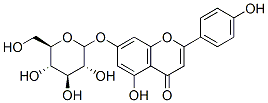
What is Apigenin 7-glucoside?
The Uses of Apigenin 7-glucoside
Apigenin 7-Glucoside is a by-product during the synthesis of Isorhoifolin (I819700), a naturally occurring flavonoid that was shown to exhibit potential antidiabetic, antihyperlipidemic and antioxidant effects.
Definition
ChEBI: A glycosyloxyflavone that is apigenin substituted by a beta-D-glucopyranosyl moiety at position 7 via a glycosidic linkage.
What are the applications of Application
Apigenin 7-glucoside is a flavonoid with anti-inflammatory and anxiolytic activities. It inhibits LPS-induced nitric oxide production in RAW 264.7 cells when used at concentrations ranging from 0.16 to 10 μM. In vivo, apigenin 7-glucoside (10 mg/kg) reduces pulmonary edema and lung inflammation in a mouse model of LPS-induced acute lung injury. It also increases the number of entries and the time spent in the open arms of the elevated plus maze in rats, indicating anxiolytic activity.
Biological Functions
Apigenin 7-glucoside inhibited HL-60 cell growth, dose- and time-dependently, but did not cause apoptosis. The distribution of cells at different stages in the cell cycle indicated an accumulation of treated cells in the G2/M phase. Moreover, apigenin 7-glucoside induced granulocytic differentiation of HL-60 cells[1].
References
[1] Eri Nakazaki. “Proteomic study of granulocytic differentiation induced by apigenin 7-glucoside in human promyelocytic leukemia HL-60 cells.” European Journal of Nutrition 52 1 (2013): 25–35.
Properties of Apigenin 7-glucoside
| Melting point: | 230-237°C |
| Boiling point: | 788.9±60.0 °C(Predicted) |
| Density | 1.642±0.06 g/cm3(Predicted) |
| storage temp. | Inert atmosphere,2-8°C |
| solubility | DMSO (Slightly, Sonicated), Methanol (Slightly) |
| form | neat |
| pka | 6.13±0.40(Predicted) |
| form | Solid |
| color | Pale Yellow to Yellow |
| BRN | 65669 |
| Stability: | Hygroscopic |
| CAS DataBase Reference | 578-74-5(CAS DataBase Reference) |
Safety information for Apigenin 7-glucoside
Computed Descriptors for Apigenin 7-glucoside
| InChIKey | KMOUJOKENFFTPU-YUVSVTSJNA-N |
| SMILES | C1(C2=CC=C(O)C=C2)OC2=C(C(=CC(OC3O[C@H](CO)[C@@H](O)[C@H](O)[C@H]3O)=C2)O)C(=O)C=1 |&1:17,20,22,24,r| |
New Products
4-Fluorophenylacetic acid 4-Methylphenylacetic acid N-Boc-D-alaninol N-BOC-D/L-ALANINOL Tert-butyl bis(2-chloroethyl)carbamate 3-Morpholino-1-(4-nitrophenyl)-5,6-dihydropyridin- 2(1H)-one Furan-2,5-Dicarboxylic Acid Tropic acid S-2-CHLORO PROPIONIC ACID ETHYL ISOCYANOACETATE 2-Bromo-1,3-Bis(Dimethylamino)Trimethinium Hexafluorophosphate (6-METHYL-[1,3]DITHIOLO[4,5-b]QUINOXALIN-2-ONE INDAZOLE-3-CARBOXYLIC ACID 4-IODO BENZOIC ACID (2-Hydroxyphenyl)acetonitrile 4-Bromopyrazole 5,6-Dimethoxyindanone 2-(Cyanocyclohexyl)acetic acid 4-methoxy-3,5-dinitropyridine 2-aminopropyl benzoate hydrochloride 1-(4-(aminomethyl)benzyl)urea hydrochloride diethyl 2-(2-((tertbutoxycarbonyl)amino) ethyl)malonate tert-butyl 4- (ureidomethyl)benzylcarbamate Ethyl-2-chloro((4-methoxyphenyl)hydrazono)acetateRelated products of tetrahydrofuran
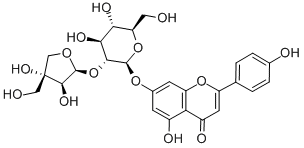

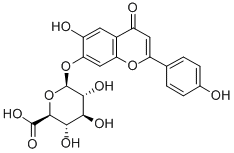
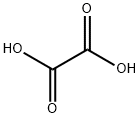


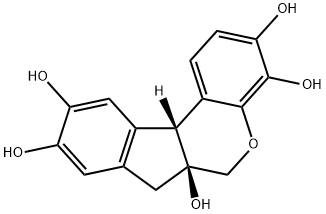
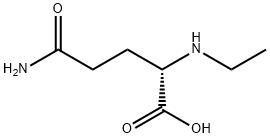
You may like
-
 Apigenin 7-glucoside CAS 578-74-5View Details
Apigenin 7-glucoside CAS 578-74-5View Details
578-74-5 -
 Apigenin 7-glucoside CAS 578-74-5View Details
Apigenin 7-glucoside CAS 578-74-5View Details
578-74-5 -
 1975-50-4 98%View Details
1975-50-4 98%View Details
1975-50-4 -
 2-HYDROXY BENZYL ALCOHOL 98%View Details
2-HYDROXY BENZYL ALCOHOL 98%View Details
90-01-7 -
 2-Chloro-1,3-Bis(Dimethylamino)Trimethinium Hexafluorophosphate 221615-75-4 98%View Details
2-Chloro-1,3-Bis(Dimethylamino)Trimethinium Hexafluorophosphate 221615-75-4 98%View Details
221615-75-4 -
 61397-56-6 CIS BROMO BENZOATE 98%View Details
61397-56-6 CIS BROMO BENZOATE 98%View Details
61397-56-6 -
 14714-50-2 (2-Hydroxyphenyl)acetonitrile 98+View Details
14714-50-2 (2-Hydroxyphenyl)acetonitrile 98+View Details
14714-50-2 -
 118753-70-1 98+View Details
118753-70-1 98+View Details
118753-70-1